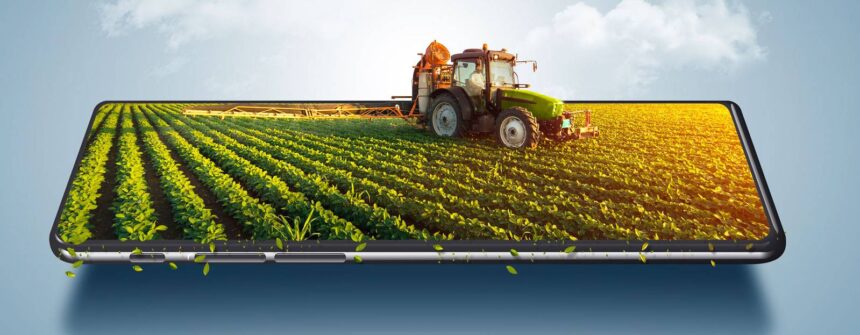The agricultural sector continues to evolve rapidly, with technology at the forefront of transforming traditional farming practices. Crop management software is an integral part of this transformation, enabling farmers to optimize processes, enhance productivity, and ensure sustainability. As we move into 2025 and beyond, several emerging trends are reshaping the landscape of crop management software. This article explores five key trends set to define the future of this industry.
1. Integration of Artificial Intelligence and Machine Learning
Artificial Intelligence (AI) and Machine Learning (ML) have become central to modern agricultural solutions. In agriculture management software, these technologies offer predictive analytics and decision support that empower farmers to make smarter, data-driven choices.
How AI and ML Are Shaping Crop Management:
- Predictive Crop Yields: AI models analyze historical data, weather patterns, and soil health to predict crop yields with remarkable accuracy.
- Pest and Disease Detection: ML-powered image recognition identifies early signs of pest infestations or diseases, allowing farmers to intervene proactively.
- Resource Optimization: AI algorithms provide precise recommendations for water usage, fertilizer application, and pest control, reducing waste and cost.
As these tools become more sophisticated, we can expect crop management software to offer hyper-personalized insights tailored to specific farming conditions, revolutionizing how farmers manage their fields.
2. IoT and Real-Time Data Monitoring
The Internet of Things (IoT) is reshaping agriculture by enabling real-time monitoring and connectivity. Sensors placed in fields, machinery, and storage facilities collect and transmit data to crop management platforms, offering a real-time overview of farm operations.
Key Applications of IoT in Crop Management:
- Precision Farming: IoT sensors monitor soil moisture, temperature, and nutrient levels, providing actionable data for precision farming.
- Weather Forecast Integration: Connected devices provide real-time weather updates, helping farmers plan planting, irrigation, and harvesting schedules more effectively.
- Remote Monitoring: Farmers can monitor their fields and crops from anywhere, using mobile devices or desktop platforms.
The combination of IoT and crop management software creates a seamless ecosystem where farmers can respond immediately to environmental changes, ensuring optimal crop health and yield.
3. Blockchain for Transparency and Traceability
Consumers and regulatory bodies increasingly demand transparency in the agricultural supply chain. Blockchain technology is emerging as a game-changer in crop management software by offering secure, immutable records that track every stage of production.
Benefits of Blockchain in Crop Management:
- Farm-to-Fork Traceability: Blockchain records details about crop cultivation, harvesting, processing, and transportation, ensuring transparency for end consumers.
- Quality Assurance: Farmers can verify the authenticity of seeds, fertilizers, and other inputs through blockchain-enabled traceability.
- Compliance Management: Blockchain simplifies adherence to agricultural regulations by providing verifiable records for audits.
As trust and transparency become paramount in agriculture, the integration of blockchain into crop management software is set to become a standard feature.
4. Enhanced Mobile Accessibility
With the increasing adoption of smartphones among farmers, mobile-friendly crop management software is gaining traction. Apps designed for mobile devices allow farmers to access critical data and perform essential tasks on the go.
Mobile Features Revolutionizing Crop Management:
- Field Mapping: Farmers can use GPS-enabled apps to map their fields, identify zones, and monitor crop health.
- Instant Alerts: Notifications about weather changes, pest outbreaks, or irrigation needs keep farmers informed in real-time.
- Collaborative Platforms: Mobile apps facilitate communication and data sharing among farmers, agronomists, and supply chain stakeholders.
In 2025, crop management software providers are likely to prioritize mobile-first development, ensuring that their solutions cater to the growing demand for on-the-go accessibility.
5. Sustainability-Focused Features
Sustainability is no longer just a buzzword in agriculture; it’s a necessity. Crop management software is incorporating features that help farmers minimize their environmental footprint while maximizing productivity.
Sustainability Trends in Crop Management Software:
- Carbon Footprint Monitoring: Software tools now track carbon emissions associated with various farming activities, helping farmers adopt eco-friendly practices.
- Water Management Solutions: Advanced irrigation systems integrated with crop management software ensure efficient water usage, preventing wastage.
- Soil Health Management: By analyzing soil data, software platforms recommend practices that enhance soil fertility and prevent degradation.
With climate change and resource scarcity posing significant challenges, sustainability-focused crop management software will play a critical role in ensuring the future of farming.
Key Benefits of Emerging Trends in Crop Management Software
The trends discussed above are not merely technological advancements; they have real-world implications for farmers, agribusinesses, and consumers.
For Farmers:
- Increased efficiency through automation and data-driven insights.
- Improved crop yields and reduced resource wastage.
- Better preparedness for climate variability and environmental challenges.
For Agribusinesses:
- Enhanced supply chain visibility and traceability.
- Streamlined compliance with international standards and regulations.
- Opportunities for innovation and new revenue streams.
For Consumers:
- Access to safer, sustainably produced food.
- Greater transparency in food sourcing and production processes.
Future Challenges and Considerations
While these trends promise significant advancements, the adoption of next-gen crop management software also comes with challenges:
- Data Security and Privacy: With increasing reliance on digital platforms, protecting sensitive data is a priority.
- Cost of Implementation: Advanced technologies like AI, IoT, and blockchain can be expensive, posing a barrier for small-scale farmers.
- Digital Literacy: Ensuring that farmers and agricultural workers can effectively use these tools is crucial for widespread adoption.
To overcome these challenges, software providers must focus on creating user-friendly, cost-effective solutions and invest in farmer education and training.
Conclusion
As agriculture faces increasing pressure to meet global food demands sustainably, crop management software is becoming indispensable. The integration of AI, IoT, blockchain, mobile accessibility, and sustainability-focused features marks a significant step forward in modernizing the industry.
By embracing these emerging trends, farmers can unlock new levels of efficiency and productivity, ensuring that agriculture thrives in 2025 and beyond. The future of farming is not just about growing crops; it’s about growing smarter, more sustainable, and transparent systems that benefit everyone.
Whether you’re a farmer looking to optimize operations or an agribusiness aiming to stay ahead of the curve, understanding and leveraging these trends will be crucial for success in the years to come.


